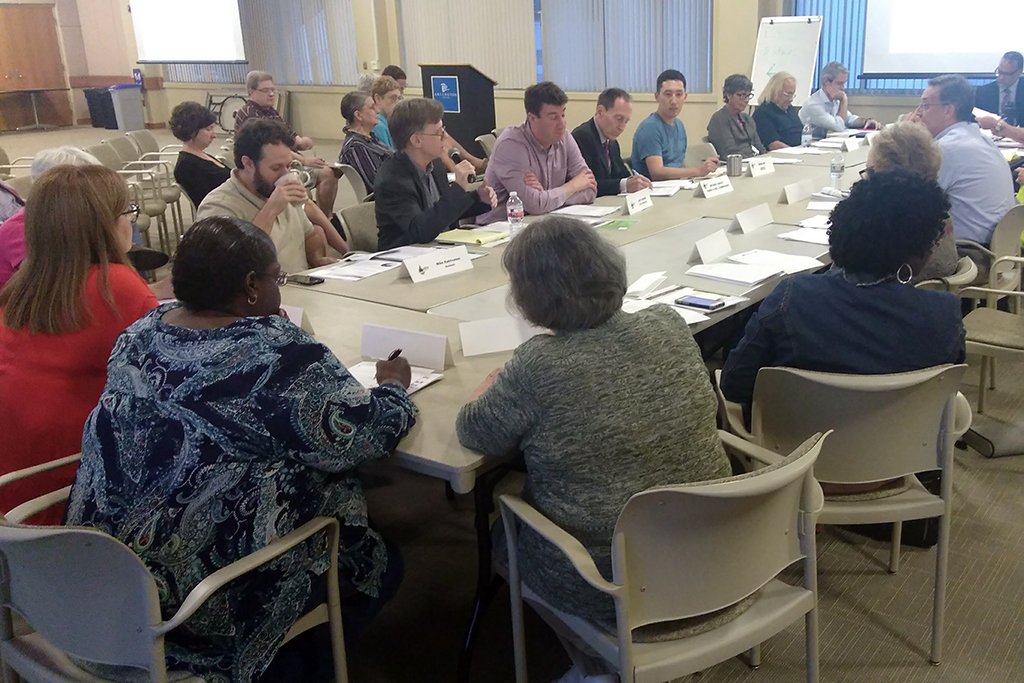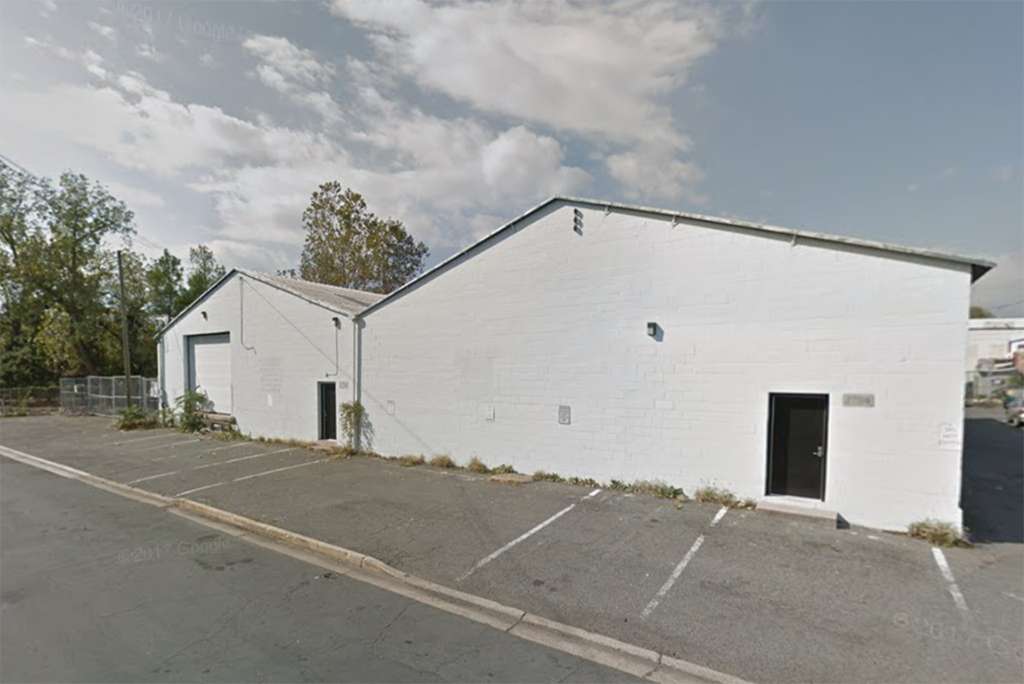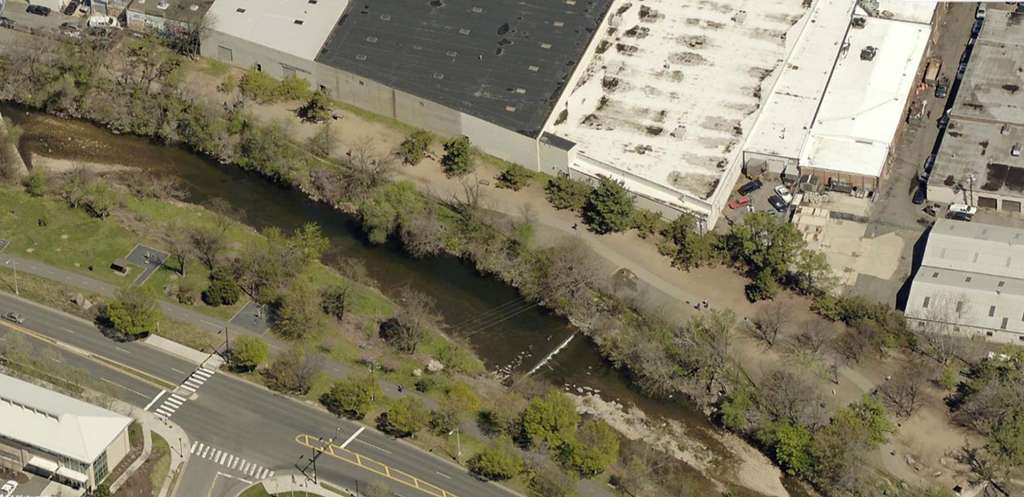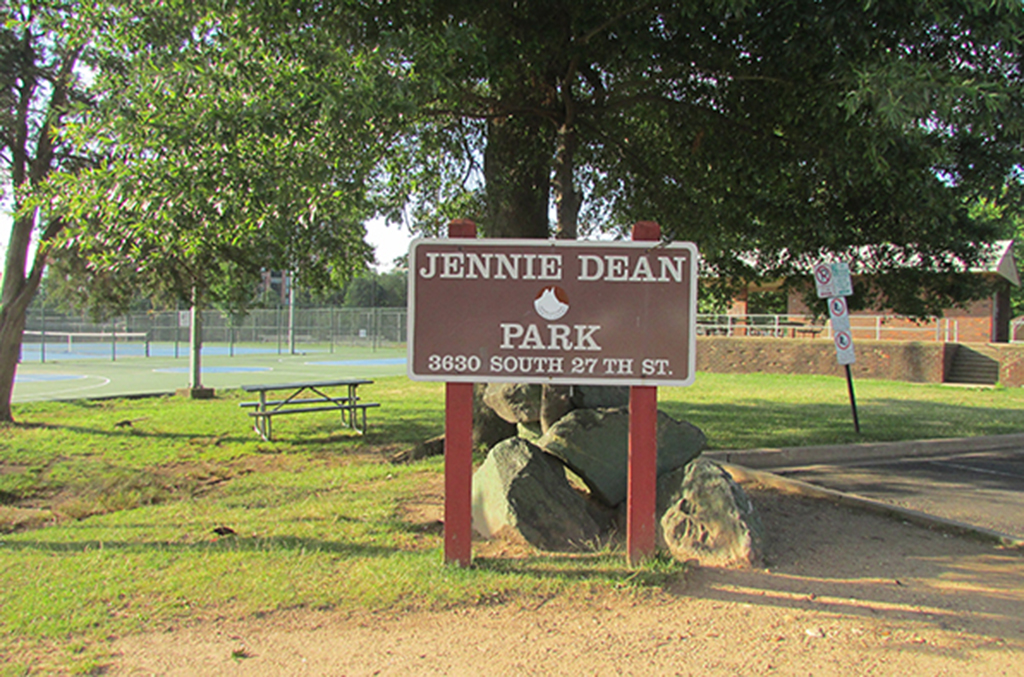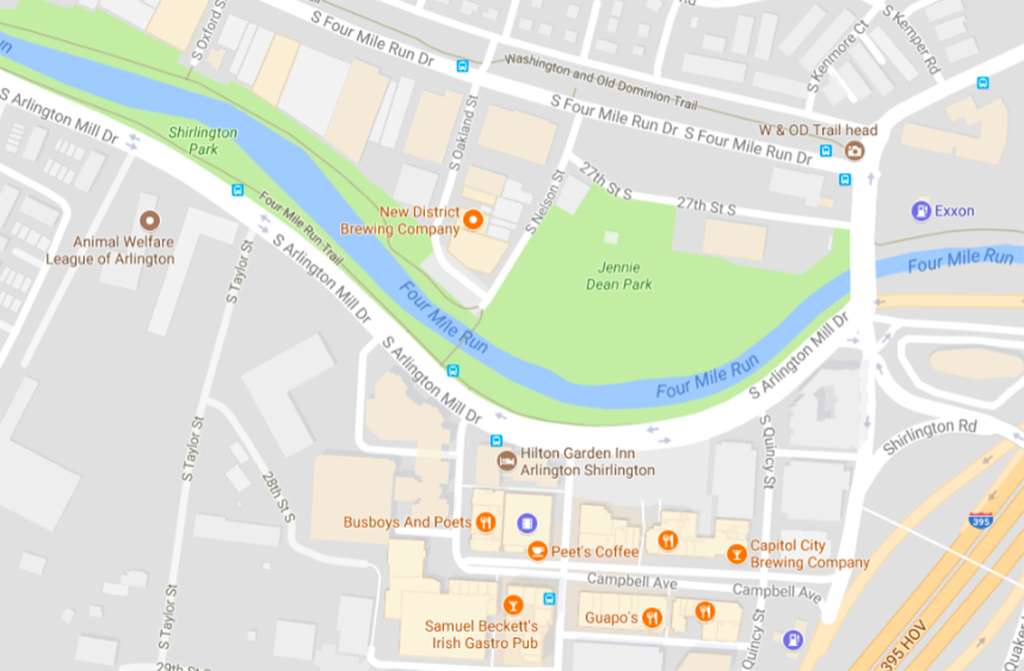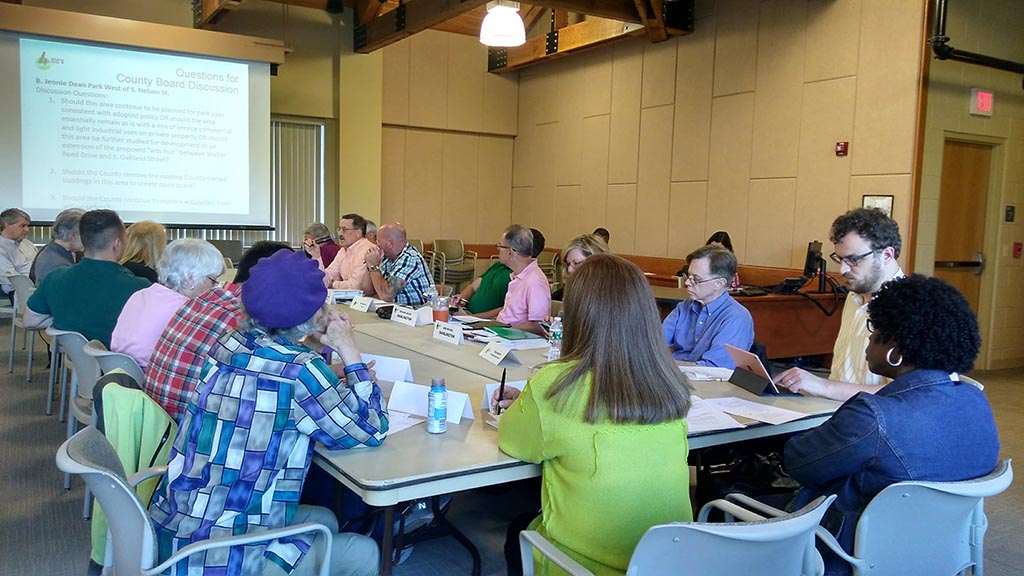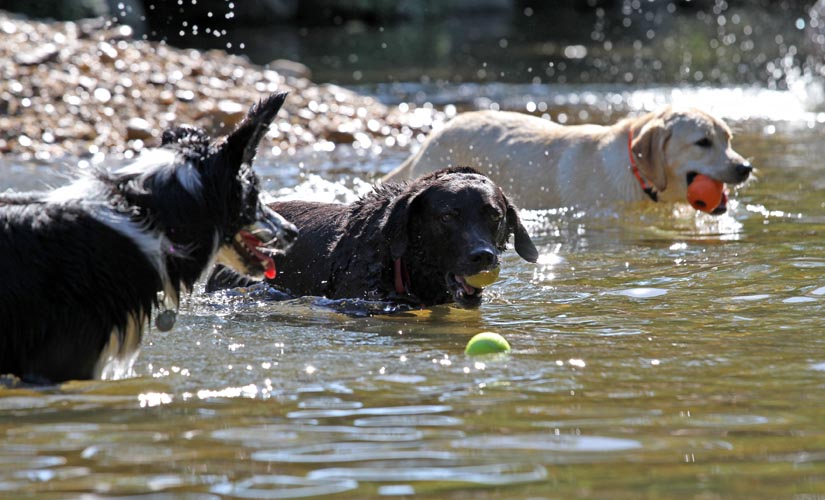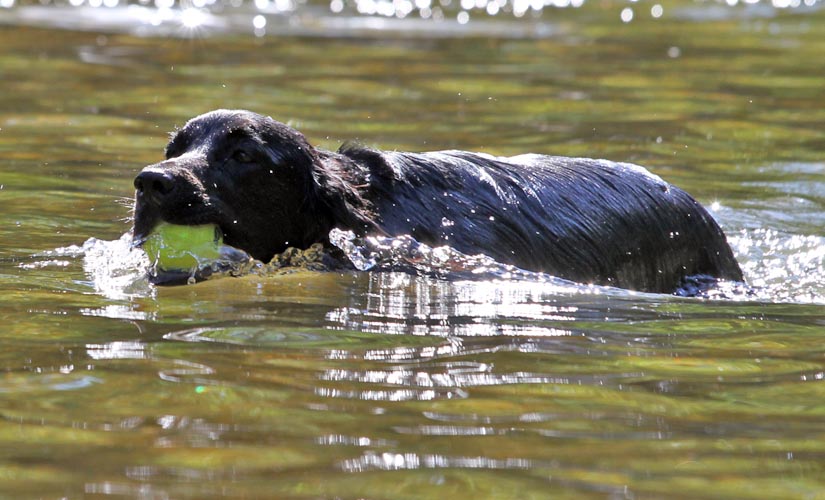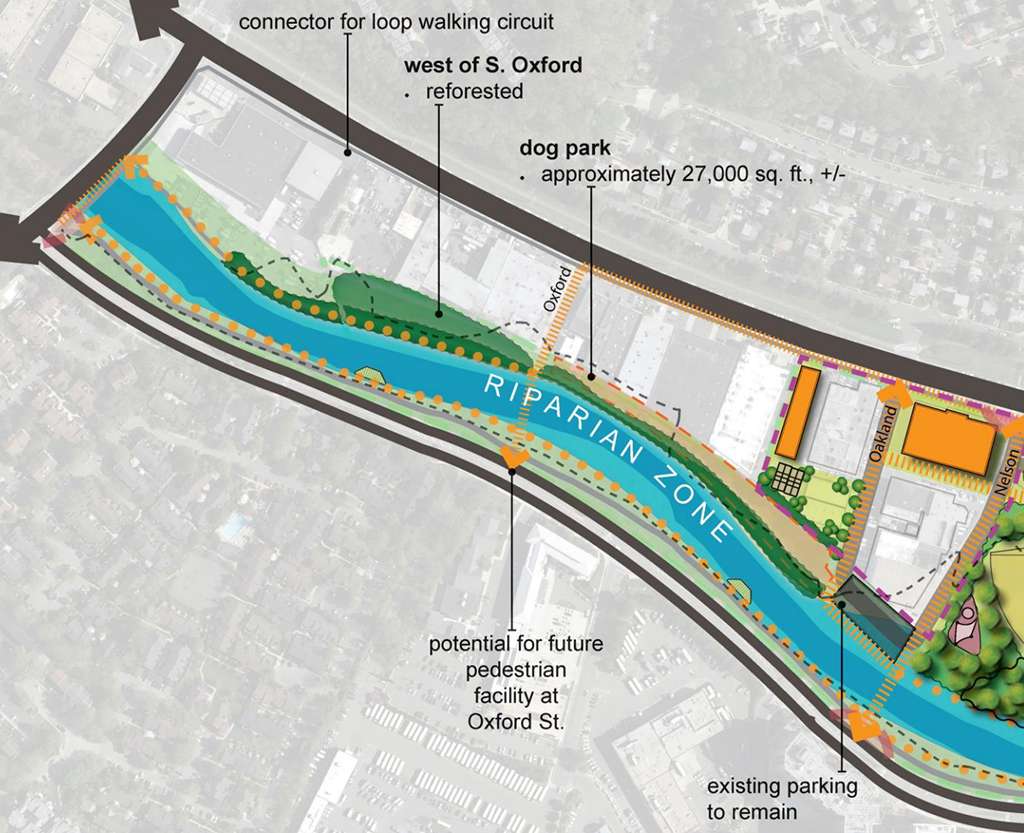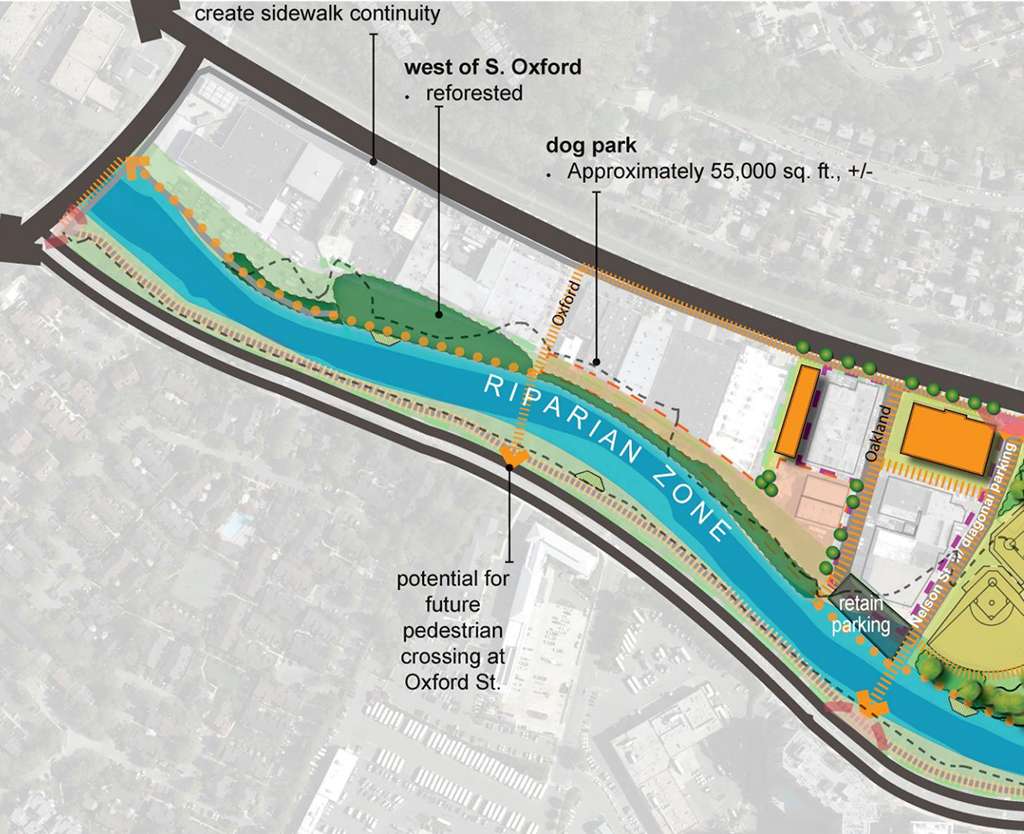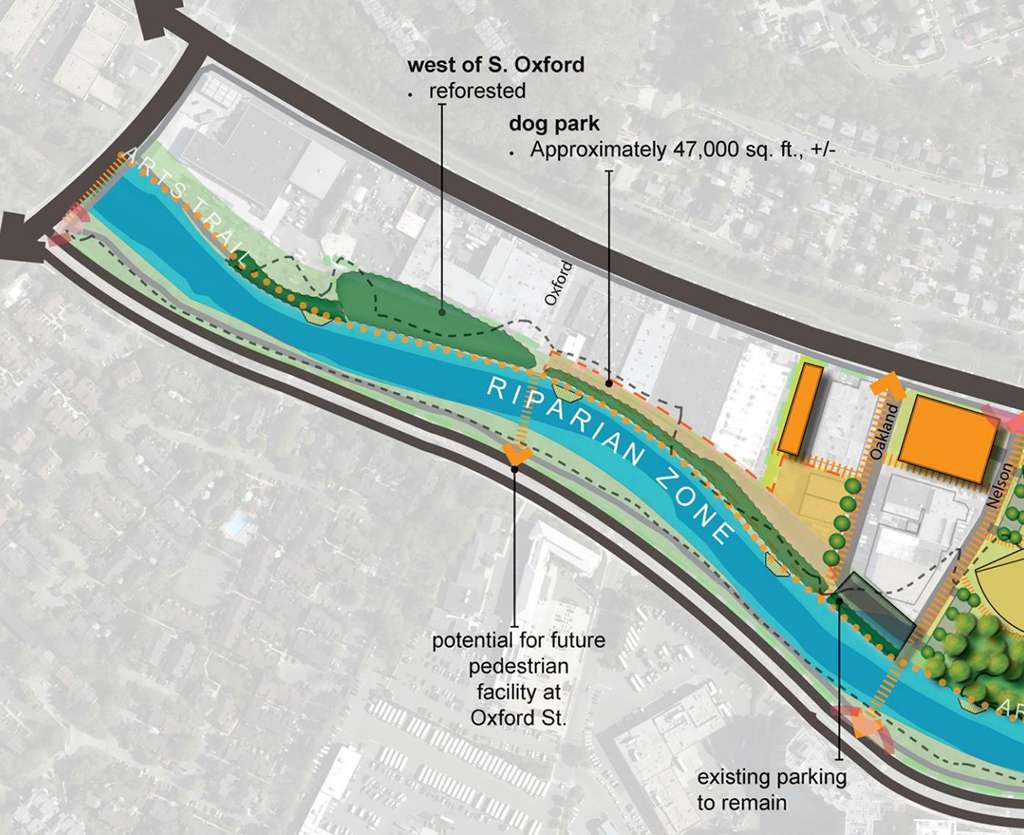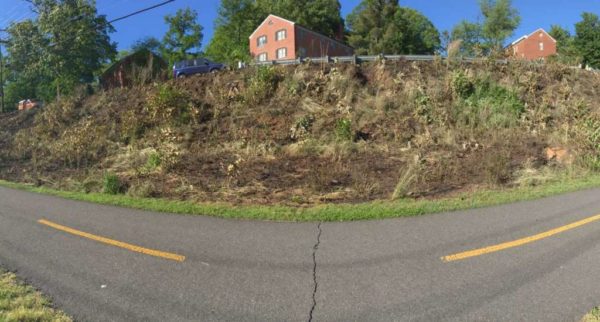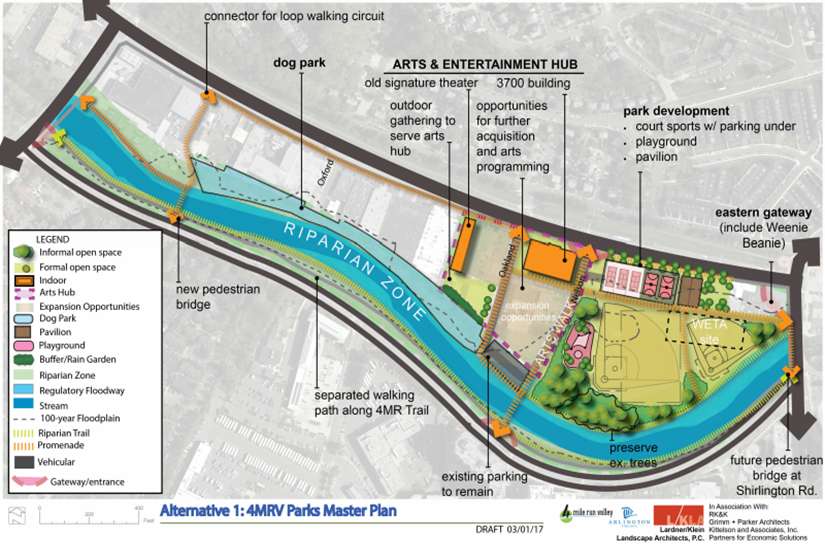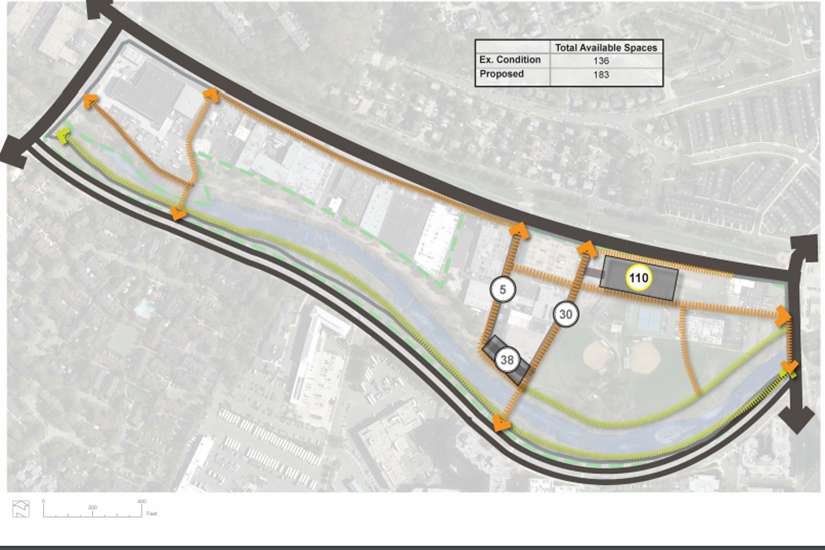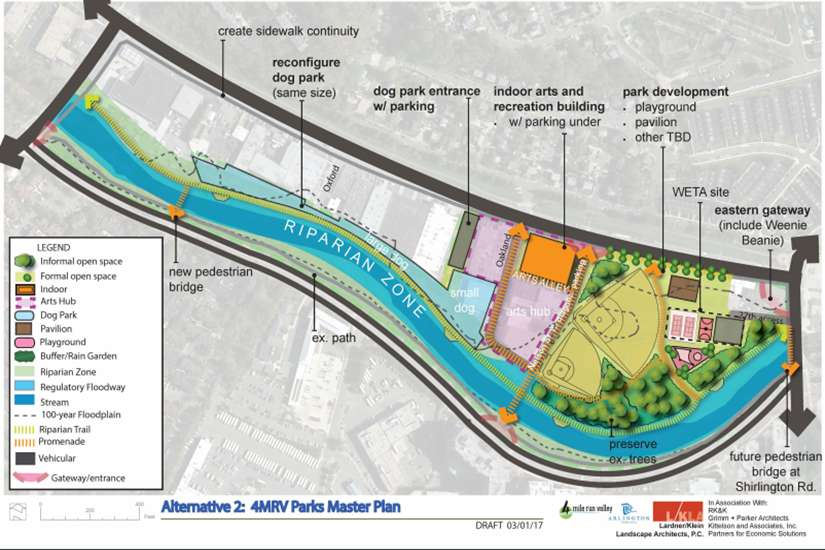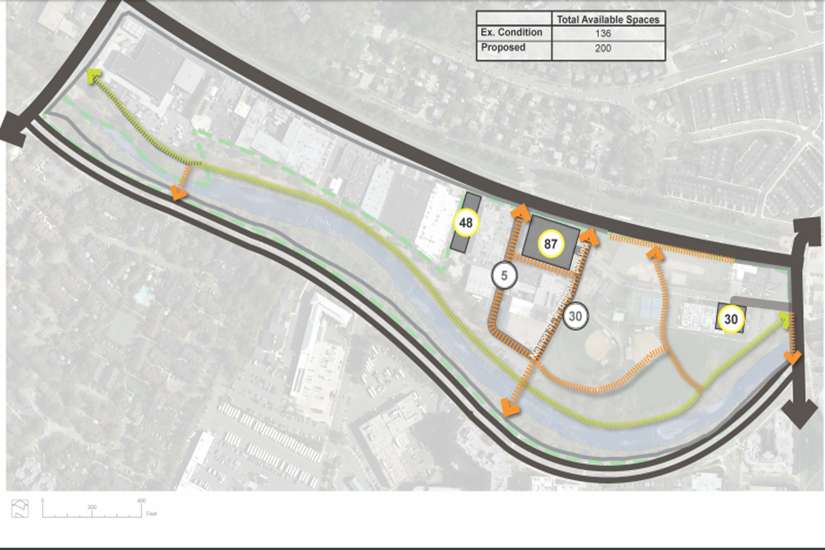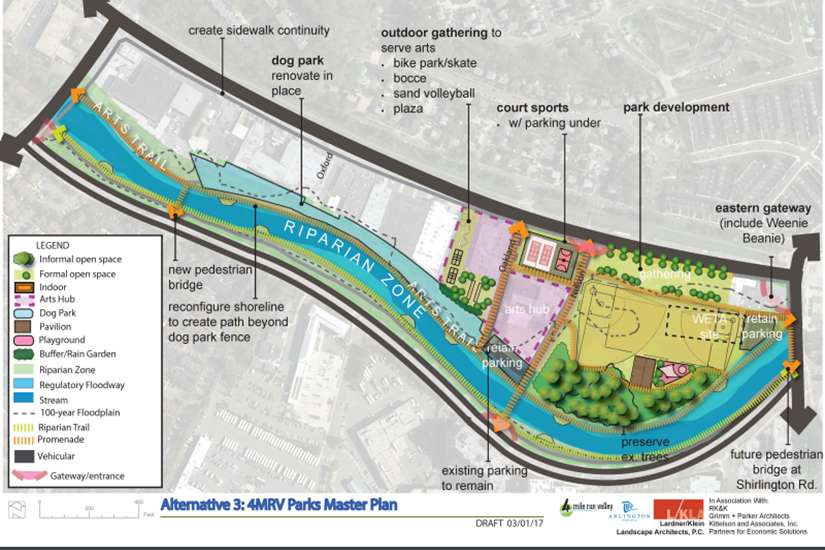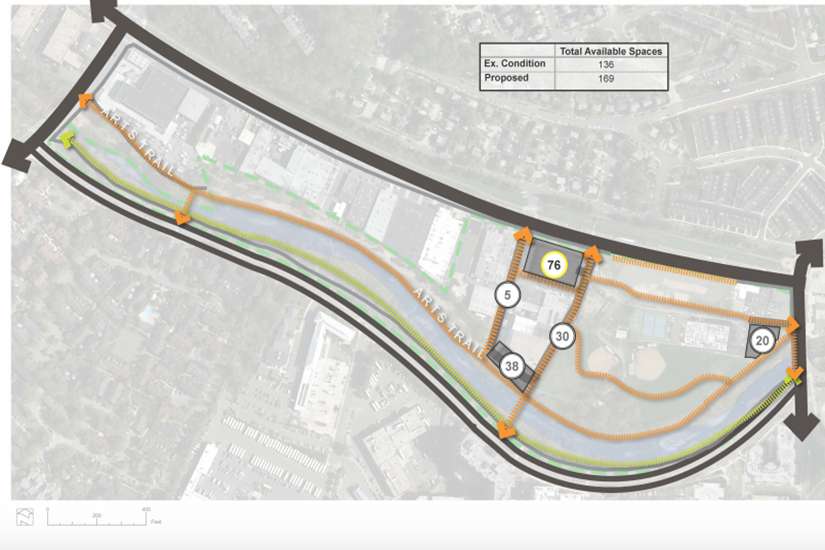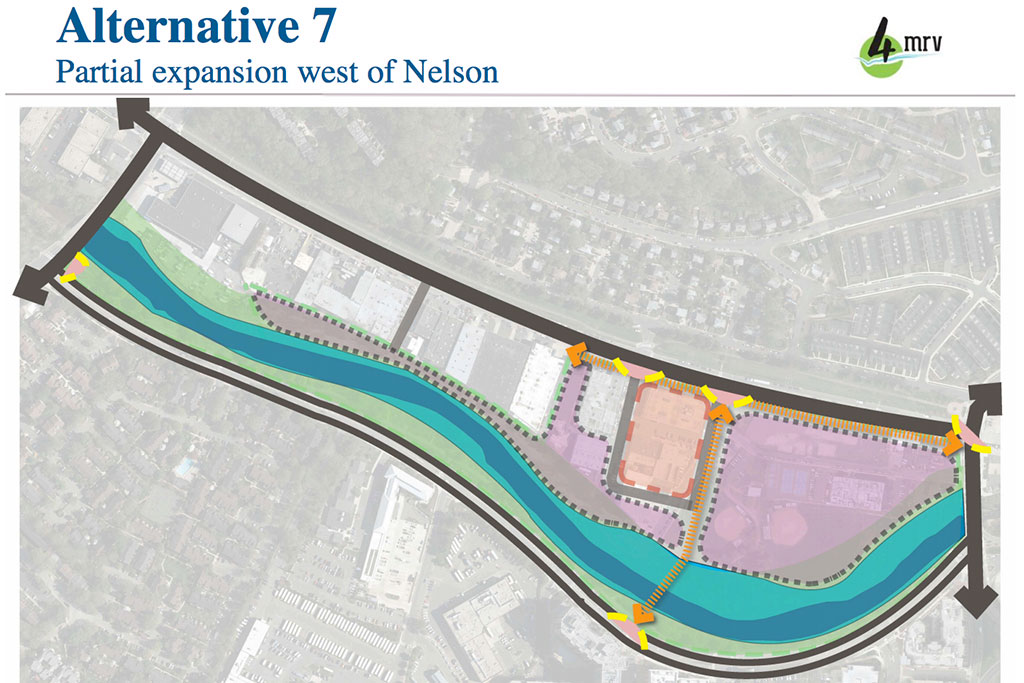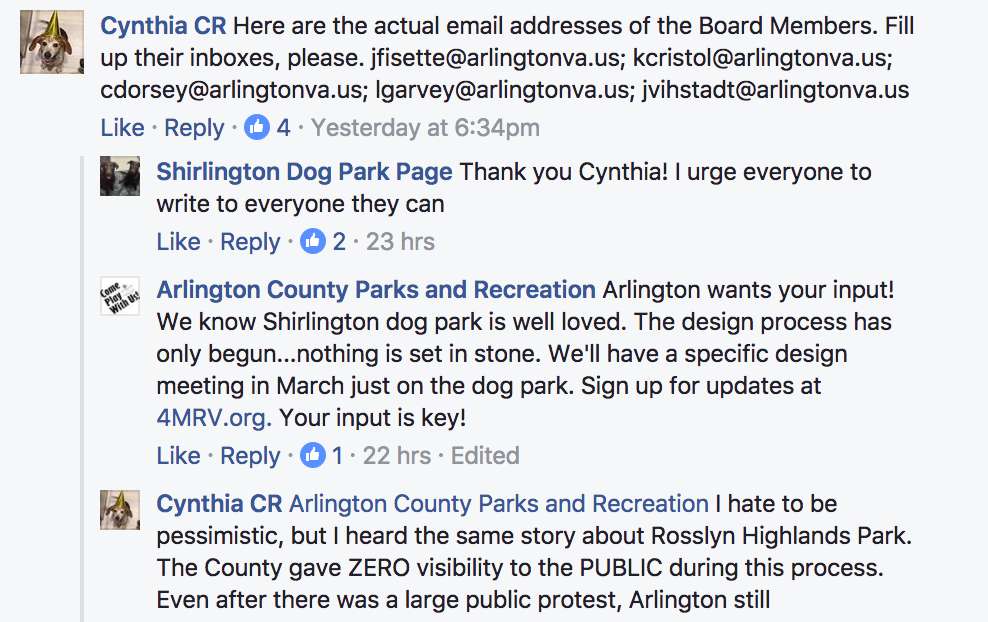A report on the future of the Shirlington Dog Park did not recommend reducing its size, but still left members of the Four Mile Run Valley Working Group with plenty of questions.
The report, prepared by a committee of five group members over the summer, made various recommendations for the park’s short, medium and long-term future.
It looks to find ways to manage stormwater runoff into Four Mile Run from surfaces that do not absorb rainwater and to ensure the park remains well-used. The report was drafted after the Arlington County Board sent plans to reduce its size back to the drawing board.
The report said taking down two county-owned warehouses on S. Oakland Street, adjacent to the park, would help manage stormwater runoff and allow a connection between the dog park and a proposed arts district nearby.
“In addition to addressing some adjacent stormwater issues, this would serve an array of complementary objectives such as integrating this new park area and the dog park with the arts district, provide a flexible-use area for festivals and arts events, provide swing space for recreational functions as Jennie Dean Park is developed, and improve connectivity and open up the line of sight from South Four Mile Drive into the park,” the report reads.
But in suggesting those warehouses be taken down, some group members argued the committee exceeded the scope of its study.
“I felt as though the report spent a lot of time on issues that frankly were not in the group’s charge,” said group vice chair Robin Stombler. Others noted that a report on a potential arts district suggested using the warehouses as space for artists.
Longtime civic leader Carrie Johnson expressed her disappointment at what she described as a “disputed space problem,” and urged the group to find a compromise between the warehouses’ use in the arts district or removal for the dog park.
“I would have hoped to hear less fighting over acreage and more about how it could be used for everybody’s benefit,” she said.
In the short-term, the group recommended various small ways to help manage stormwater at the park, including no longer mowing the grass, protecting existing trees and limiting access to the stream.
But in the medium term, the report called on county government to show leadership in managing stormwater runoff from its buildings to help protect the park. They also urged an expansion of a program where businesses receive grants and other incentives to install ways to manage stormwater through green roofs, rain barrels and the like.
The area’s current zoning encourages making changes through redevelopment, as opposed to incentivizing existing businesses to make those environmentally-friendly tweaks.
“There seems to be no answer here, because the county seems unable to change anything for the existing businesses until they redevelop,” said Anne Inman, a group member.
The report noted that the need to balance stormwater with the park’s popularity is a “catch-22,” as “leaving the park in its current condition is not a viable long-term solution, but efforts to mitigate the environmental issues would trigger significant, costly and undesirable changes to the park.”
Group chair Charles Monson said they will not look to endorse any report prepared by a committee, but will instead use them to guide their thinking as planning the area’s future continues.
The report’s full recommendations are after the jump.


